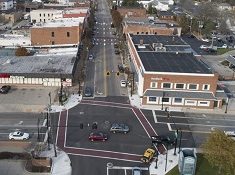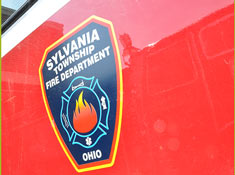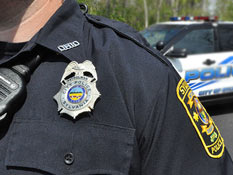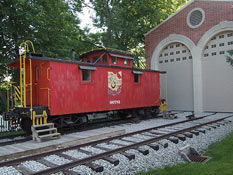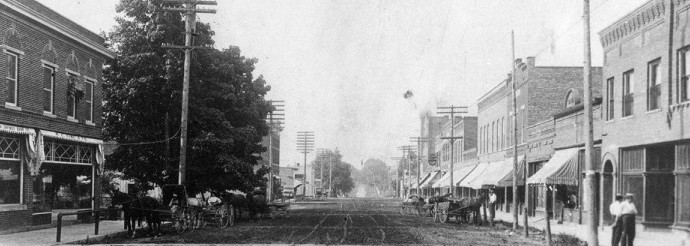
Main St. Sylvania in 1910
A Brief History of Sylvania
Find out how Sylvania got its name – and almost didn’t – and the early schools that built the city’s future. From news stories and resignations to Pretty Boy Floyd and Harriet Beecher Stowe, Sylvania has history worth getting to know.
The Founding
In 1832, General David White acquired the title to a “considerable” tract of land lying in the eastern half of the future site of Sylvania. He constructed a log house at the northeast corner of Summit and Monroe streets. On July 13, 1836, the plat of the town of Sylvania was recorded by Judge William Wilson. A large granite boulder at the corner of Erie and Division streets marked the beginning of the present City of Sylvania.
Sylvania almost didn’t happen! A dispute between White and Wilson led White to record the town of Whiteford in Michigan. White favored the name “Whiteford,” and Wilson favored the name “Sylvania” – the Latin word for “woods or trees.” Had it not been for this disagreement, Sylvania would have been named Whiteford!
Sylvania’s Early Schools
The first school building was erected in 1834 on the west side of Main Street, midway between Erie Street and Blank (now Maplewood Avenue). General White paid for this first school.
This site proved unsuitable, however, because of noise from the rail line running through town and the efforts of the train engineer to negotiate the curve north of Erie Street. The school was then moved to “the opposite side of town,” somewhere near the southwest corner of Summit Street and Blank (Maplewood).
The first “real” school opened in 1844. It was built with fossil stone from the nearby quarry and was named Stone Academy.
As the village and its population grew, more classrooms were needed and a larger, brick school was completed in 1869. This new facility was named Sylvania High School. It was built two stories high to accommodate children in the higher grades on the second floor, as well as the elementary students on the first floor.
Sylvania began construction of Burnham School in 1925 on land given by Henry Burnham. (Sylvania High School remained in use until 1929, when the new school was completed and ready to house all the students.)
At the time, the school “afforded the utmost in educational facilities.” In the 1933 book, A History of Sylvania for the First Hundred Years, several people who attended both the old school on Main Street and the new Burnham facility recalled that the Burnham building was “practically a total failure, since it had no belfry to climb.”



